-
作品名稱凹凸 ON / OFF
-
作者趙紹綸 葉銘泓 賴忠平 蔡恭庭
-
得獎年份98年
-
指導教授
-
比賽名稱2008第七屆台灣國際創意設計大賽
-
主辦單位台灣創意設計中心
-
獎項名稱佳作
-
作品連結
開關,述說的是使用與未使用間的出入,當開關按下的同時,「凹 / 凸」誠實的表達了「開 / 關」的功能性,當開啟的同時也連結起對於關閉的理解,利用凹凸與出入的關連性我們低調的呈現開關的特質,並讓使用更直覺且容易了解。 在功能考量上我們增加開關按鈕的範圍,幫助輕鬆的按壓,並以原本矩形的牆邊開關與插座作為型態上的延伸,利用前後凹凸的形式出入來表現。在插座的部份為了幫助省電,插座整體也呈現開關的形式,使用者可以不用將插頭拔起,按下開關關閉即可。 當我們剛進屋時,牆邊開關的凹凸,與方形的光亮提示,就像是密室的機關,當你欣喜若狂的按下時,帶來的是室內的光源,並與室外產生出入的轉化,情感上牆面的凹凸也傳達了記憶中的寶藏機關,而謎底是嶄新的光明與全新的空間。
A switch or a button represents [in/out] between turning on and turning off. While pushing the button, concavity and convexity, which illustrate the function “switch” frankly. And at the moment we turn it on, we may also recall the memory of turning off. By the attribution of these exchanging, we made the interface become more friendly and divinatory. In functions, we expand the area of the buttons for pressing more easily. Basing on the prototype of the rectangular panel of the button and socket, we use the concavity and convexity to represent [in/out]. We also combine the button and the socket for province electricity. With the buttons, the user can stop consuming the electricity without pulling the plug. When we getting into the house, there’s a button which seems to open an chamber of secrets by its notice of light and “concavity and convexity” on the wall.After you push it excitedly, there’s an exchange between “in” and “out” while the room becomes bright. Emotionally, the “concavity and convexity” on the wall just like a secret button to open a treasure, and this treasure are a brand-new brightness and space.

